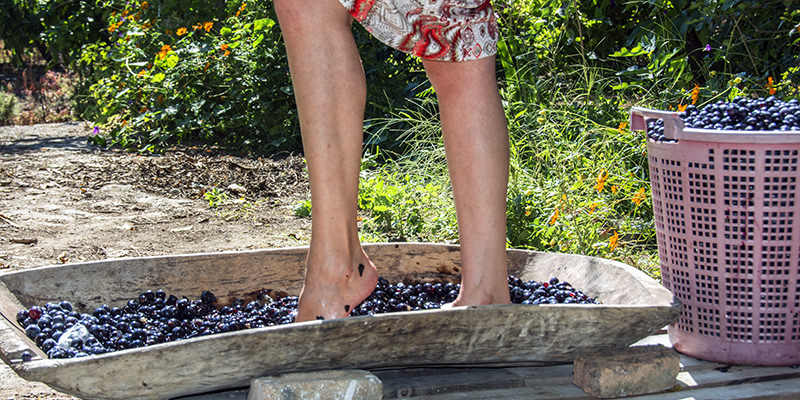The Crush is The First Step in Turning Grapes Into Wine (VinePair)

Foot treading is anything but the homey, silly dance most drinkers imagine when they think of traditional grape-stomping rituals. In reality, foot treading is far more work than modern methods for crushing grapes, though it starts the winemaking process off as efficiently as more advanced and modern methods.
The crush literally gets a grape’s juices flowing and is the first step in the process that turns fresh, delicate fruit into delicious, shelf-stable wine. As grape skins are broken — by feet or other methods — their sweet juices come into contact with grape skins, absorbing the flavor, colors, and tannins crucial for fine wines. Meanwhile, juices are also exposed to yeasts, either in the air or added by winemakers, that induce fermentation. For reds, rosés, and orange wines, this skin contact time is essential, but for whites and most bubbly it’s avoided at all costs, which makes proper crushing vital.
Through the ages, three methods have dominated the crushing process for any style of wine, and they range in complexity (and price) from bare feet to elaborate, computer-controlled machines. Though they might seem interchangeable, crushing and pressing grapes are two different processes. Crushing simply breaks grape berries, allowing the juice, pulp, and seeds to mingle with the skins and stems of the grapes. Pressing, on the other hand, is the process that separates the grape juice from the fiber and other solids that make up a berry. Sometimes, crushing and pressing are done at the same time, though they can be separated by a few hours or days depending on the style of wine being made.

